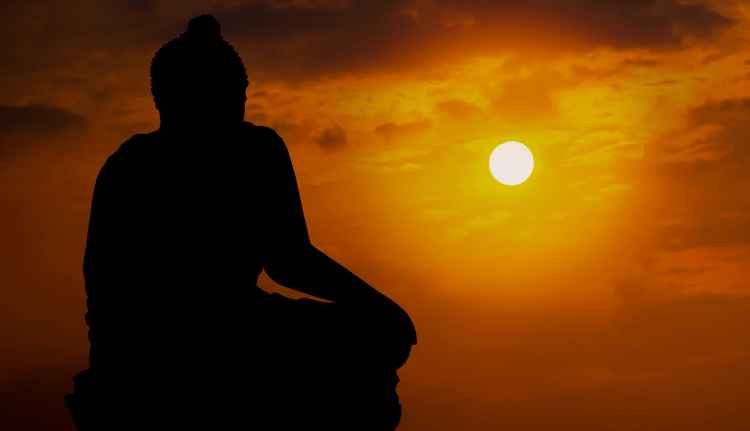This post contains affiliate links. This means I may earn a commission should you choose to sign up for a program or make a purchase using my link. I affiliate only products/services that I personally love using:)
Nothing can harm you as much as your own unguarded thoughts.
I practice and preach Buddhist teachings. And I wholeheartedly believe in this quote, along with many others, which I couldn’t put here in this particular post as we are going to jump into all about Buddhism symbol and its teachings.
For starters, I have been to many Buddhist temples in several East Asian countries, with the latest one in India. Each time I step into a Buddhist temple, I am in awe of those stunning Buddhist monasteries and stupas, the iconic Buddha statues, lotus, bells, and more.
But for me, it’s always the silence and energy that pull me towards Buddhism, which in a way keeps me grounded and relaxed. It just shows me the very essence of life on Earth. And I would love to remind myself of that and stay in that vibe forever!
With that being said, in this post, I shall delve into Buddhist symbolism and its significance. Although there are many Buddhist symbols as per research and various time periods, I will be dealing with only those symbols that I have come across and have had a personal connection with.
What does the Buddhism symbol mean?
Symbols in Buddhism hold a unique place, transcending mere visual elements to convey deep spiritual meanings. These symbols serve as gateways to understanding profound aspects of Buddhist philosophy and practice.
At the heart of Buddhism symbol stands the Dharma Wheel, often referred to as Dharmachakra. This wheel encapsulates the core teachings of Buddhism and is a visual representation of the path to enlightenment. Its intricate design, featuring a hub, spokes, and rim, carries rich symbolism.
Beyond their aesthetic appeal, these symbols bear cultural and spiritual importance. They connect practitioners to the traditions, beliefs, and shared experiences of the Buddhist community. The symbolic language becomes a medium through which profound truths are communicated and understood.
As we delve deeper into the exploration of Buddhist symbols, let’s unravel the layers of profound meaning connected to these visual representations, understanding the culture that enriches the Buddhist tradition.
The Primary Buddhism Symbol : Dharma Wheel (Dharmachakra)
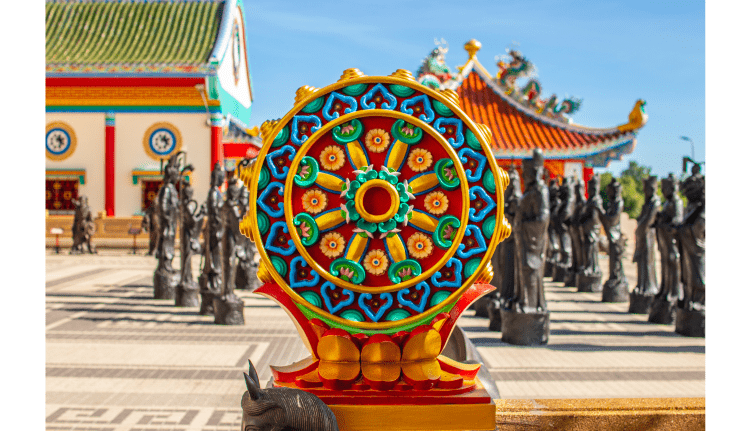
Historical Origins of the Dharma Wheel
The Dharma Wheel, or Dharmachakra, has its roots deeply embedded in the historical narrative of Buddhism. Originating from ancient India, the wheel’s symbolic journey began with the Buddha’s first sermon at Sarnath. As he expounded the Four Noble Truths and the Eightfold Path, the wheel of Dharma was set in motion, signifying the continuous cycle of teachings.
Symbolism of the Wheel’s Components: Hub, Spokes, and Rim
Each element of the Dharma Wheel carries profound symbolism.
- The hub represents moral discipline, a central aspect of Buddhist practice.
- The spokes, often depicted in sets of eight or twelve, signify the Noble Eightfold Path—the core principles guiding one towards enlightenment.
- The rim symbolises mindfulness and the state of meditative concentration.
The Meaning Behind the Eight or Twelve Spokes
The number of spokes on the Dharma Wheel holds significance.
- In the eight-spoked version, each spoke corresponds to one of the Eightfold Path factors, encompassing right understanding, intention, speech, action, livelihood, effort, mindfulness, and concentration.
- The twelve-spoked wheel further includes aspects like right view, right resolve, right speech, right conduct, right livelihood, right effort, right mindfulness, right concentration, right knowledge, right liberation, right faith, and right mindfulness.
Connection Between the Dharma Wheel and Buddha’s Teachings
The Dharma Wheel is not just a visual representation; it encapsulates the essence of Buddha’s teachings. As the wheel turns, it symbolises the continuous cycle of birth, suffering, and rebirth.
Also read:8 Clear Signs That Tell Your Reincarnation Cycle On Earth Is Coming To An END!
Aligning with the ceaseless nature of life’s challenges, the wheel offers guidance on breaking free from this cycle through the application of Buddhist principles.
The Dharma Wheel is not merely a static symbol but a dynamic guide, urging individuals to apply Buddhist principles for a liberated and enlightened life. It visually communicates the interdependence of various aspects of life and serves as a reminder of the interconnectedness of all phenomena.
Other Buddhist symbols
While the dharmachakra is the main and primary Buddhist symbol, there are a few other symbols that shed light on life’s essence, spirituality, and inner growth.
1. Lotus Flower Buddhism Symbol
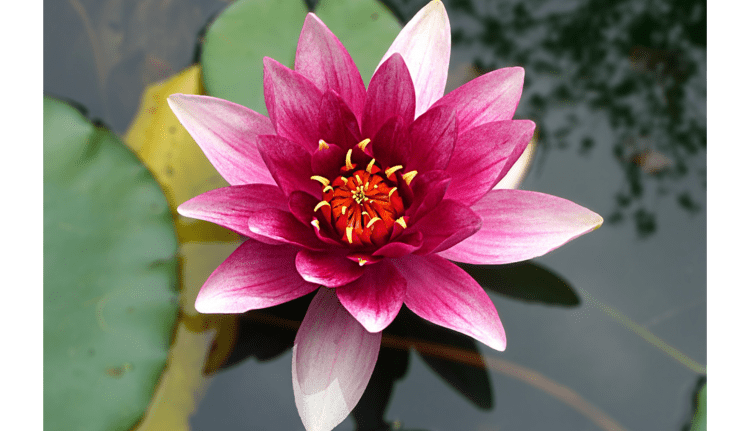
Meaning and Cultural Context
Purity and Enlightenment: The Lotus Flower symbolises purity, emerging from muddy waters to bloom in pristine beauty, mirroring the soul’s journey towards enlightenment.
Spiritual Awakening: The unfolding petals represent spiritual awakening, and the lotus often cradles deities or the Buddha in representations, emphasising divine purity.
The Lotus Flower in Buddhist Philosophy and Practice
Rebirth and Triumph: The Lotus Flower’s emergence signifies rebirth and the triumph of purity over adversity.
Visual Reminder: Used in art and rituals, it serves as a visual reminder of the path towards inner peace and spiritual growth.
2.Buddha Statue Buddhism Symbol
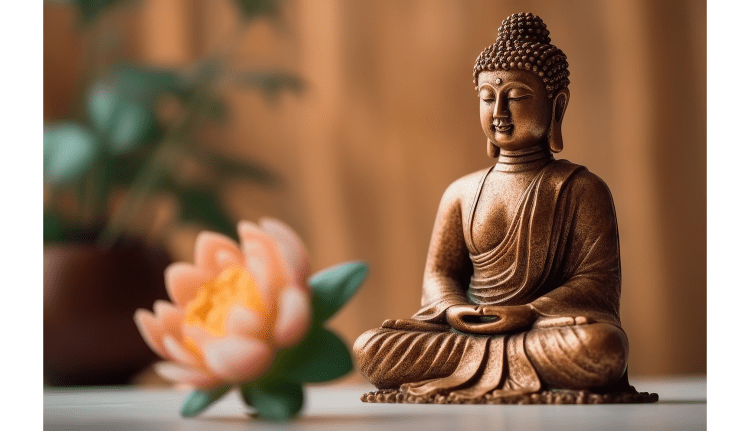
Meaning and Cultural Context
Enlightenment and compassion:
Buddha statues capture the essence of enlightenment and compassion, portraying the Buddha’s teachings through various poses like Dhyana Mudra and Bhumisparsha Mudra.
Symbolic Gestures:Different poses convey specific aspects of the Buddha’s teachings, offering a visual representation of enlightened virtues.
Buddha Statue in Buddhist Philosophy and Practice
Diverse Qualities: The variety of Buddha statues symbolises the diversity of enlightened qualities.
Constant Reminder: The serene countenance and poised demeanour serve as a constant reminder of the path towards inner peace and compassion.
3.Bodhi Tree Buddhism Symbol
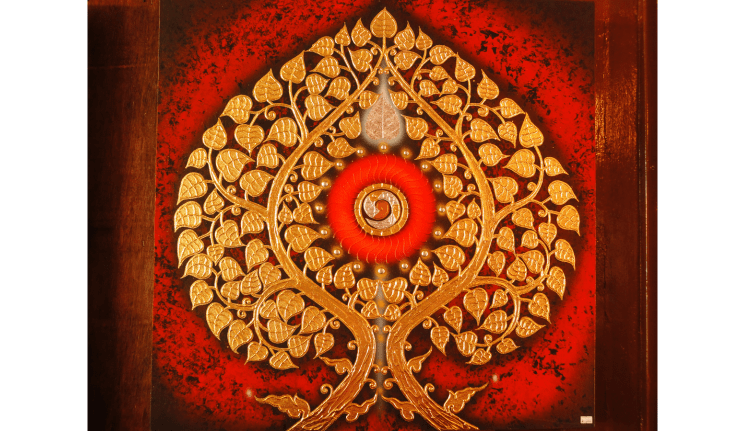
Meaning and Cultural Context
Awakening and Transformation: The Bodhi Tree, under which Buddha attained enlightenment, symbolises awakening, knowledge, and the transformative power of meditation.
Sacred Significance: Pilgrims visit Bodhi Trees for meditation, seeking spiritual insights and a connection with the profound moment in Buddhist history.
Bodhi Tree in Buddhist Philosophy and Practice
Journey Towards Enlightenment: The Bodhi Tree embodies the potential for enlightenment, representing the transformative journey towards awakening.
Symbolic Shade: Beyond its historical significance, it symbolises the tranquil shade where practitioners seek mindfulness and spiritual growth.
4.Stupa Buddhism Symbol
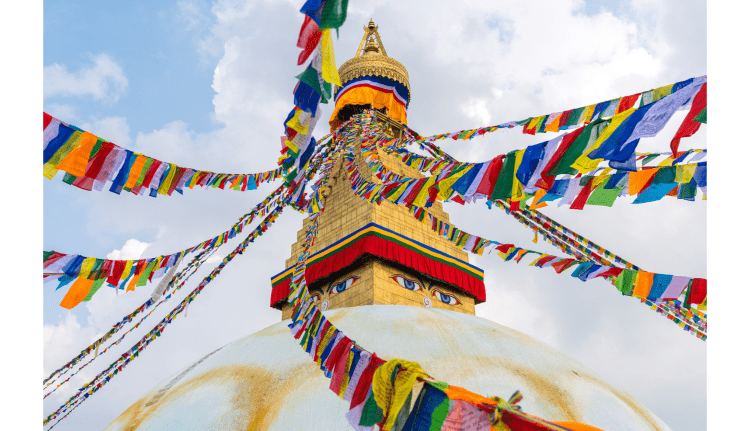
Meaning and cultural context:
Sacred Structure: The stupa represents a sacred mound or structure, often containing relics or texts associated with Buddhism.
Spiritual Architecture:Stupas serve as symbolic representations of enlightened consciousness and the path towards Nirvana.
The Stupa in Buddhist Philosophy and Practice
Spiritual Journey: The architecture of the stupa symbolises the stages of the spiritual journey, from the base (earthly concerns) to the pinnacle (spiritual enlightenment).
Pilgrimage Sites: Pilgrims visit stupas as a part of their spiritual journey, seeking blessings and connecting with Buddhist teachings.
You might also be interested in:
- How Do I Practice Stoicism In Everyday Life?
- Wisdom Unleashed : A Guide To Key Stoicism Books Shaping Modern Living
Now that we have understood the messages of various Buddhist symbols, let’s get to know how they differ according to various cultures.
Buddhism Symbol and Their Cultural Variations
Buddhism, as a diverse and widespread philosophy, encompasses various traditions, each with its own unique interpretation of symbols. Understanding these cultural variations provides insight into the richness of Buddhist symbolism.
Buddhism Symbol in Theravada Tradition
In Theravada Buddhism, prevalent in Southeast Asia, symbols often adhere closely to early teachings. The Dharma Wheel, Lotus Flower, and Buddha images are revered symbols that emphasise individual enlightenment through personal discipline and wisdom.
Buddhism Symbol in Mahayana Tradition
Mahayana Buddhism, found in East Asia, introduces a broader spectrum of symbolism. Bodhisattvas, enlightened beings who delay their own nirvana to aid others, become significant symbols, representing compassion and altruism. The concept of emptiness (sunyata) is visualised through intricate symbols like the Mandala.
Buddhism Symbol in Vajrayana Tradition
Vajrayana Buddhism, prominent in Tibetan regions, incorporates unique symbols and rituals. The vajra (diamond thunderbolt) and bell symbolise the union of wisdom and compassion. Mandalas play a crucial role, illustrating the cosmic order and guiding practitioners on their spiritual journey.
Regional and Cultural Adaptations
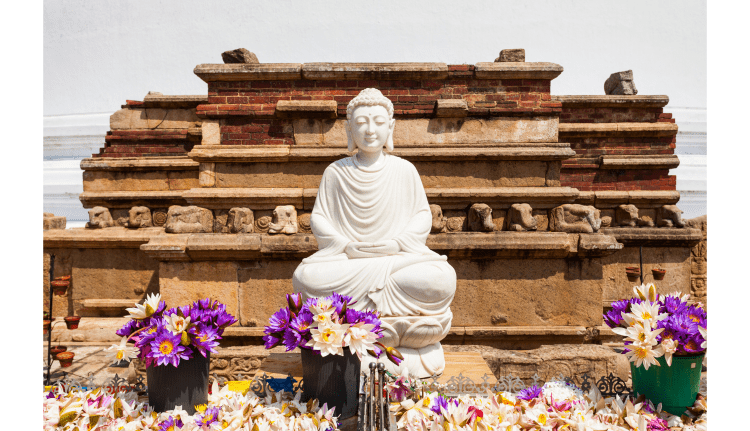
Beyond tradition-specific variations, Buddhist symbols undergo further adaptations based on regional and cultural influences. Local customs, artistic expressions, and indigenous beliefs contribute to the rich diversity of Buddhist symbolism.
For example, Thai Buddhist art might feature intricate depictions of Buddha’s life, while Tibetan Buddhist thangkas portray complex mandalas. The adaptability of symbols allows Buddhism to seamlessly integrate into diverse cultures, creating a harmonious blend of universal principles and local expressions.
Exploring these cultural variations adds depth to our understanding of Buddhism’s global impact.
Practical Application of Buddhism symbol
In the world of Buddhism, symbols transcend the realms of art and philosophy, finding tangible expression in the daily lives of practitioners. Let’s delve into how these symbols seamlessly integrate into the fabric of Buddhist practices, enriching rituals, meditation, and religious art.
1. Meditation and contemplation
Buddhist symbols serve as focal points during meditation, guiding practitioners on their inner journey. The Dharma Wheel, Lotus Flower, or Mandala becomes a visual anchor, aiding in concentration and contemplation. As the mind engages with these symbols, it aligns with the profound teachings of Buddhism, fostering clarity and insight.Learn how to meditate like a Buddhist.
2. Rituals and Ceremonies
Rituals play a significant role in Buddhist traditions, and symbols are key participants in these ceremonial expressions. From the chanting of mantras to the intricate placement of symbolic artefacts, rituals have become a language of reverence and devotion. Each gesture, offering, or symbolic act carries profound meaning, connecting the practitioner to the essence of Buddhist teachings.
3. Religious Art and Iconography
Buddhist art, whether in the form of paintings, sculptures, or intricate thangkas, is a visual array of symbols. Each stroke of the brush or sculpted form communicates spiritual narratives. The artist becomes a storyteller, weaving the symbols into a visual language that transcends words. These artistic expressions not only adorn sacred spaces but also serve as educational tools, transmitting the wisdom of Buddhism through the ages.
4. Deepening Connection to Teachings
Buddhism Symbol act as bridges between the abstract concepts of Buddhist philosophy and the practical aspects of daily life. Whether through a symbol engraved on a ritual object, a mural adorning a monastery wall, or a piece of religious jewellery, Buddhists carry these symbols as reminders of their spiritual path.
The tangible presence of symbols becomes a source of inspiration, fostering a deeper connection to the teachings of compassion, wisdom, and enlightenment.
In the practical application of Buddhist symbols, a harmonious synergy emerges, blending the sacred with the everyday. As practitioners engage with these symbols, they not only participate in rituals but are also on a continuous journey of self-discovery and spiritual growth.
You might also be interested in:
- The Heart of the Buddha’s Teaching : Transforming Suffering into Peace, Joy, and Liberation
- Buddhism for Beginners: Clear Answers to Burning Questions About Core Buddhist Teachings
- Buddhism: Beginner’s Guide to Understanding and Practicing Buddhism to Become Stress & Anxiety Free
Modern Interpretations of Buddhism Symbol
In the ever-evolving landscape of Buddhism, traditional symbols navigate the currents of time, adapting to contemporary interpretations and resonating with modern sensibilities. We had a look into the primary and all other Buddhist symbols, their meanings, implications across traditions, and practical applications.
Now let’s explore how these symbols find relevance in today’s modern world.
1. Contemporary Adaptations
As Buddhism encounters the challenges and nuances of the modern world, symbols undergo reinterpretations. Contemporary Buddhists and scholars bring fresh perspectives to traditional symbols, extracting universal themes that transcend cultural boundaries.
The Dharma Wheel, for instance, may be seen as a symbol of interconnectedness in a globalised world, emphasising the interdependence of all beings.
2. Mindfulness and everyday life
Symbols play a crucial role in the practice of mindfulness, offering points of focus in the present moment. In today’s fast-paced world, where distractions abound, symbols provide anchors for individuals seeking tranquilly and presence.
The Lotus Flower, representing purity and resilience, becomes a visual reminder to bloom amidst life’s challenges. And I personally love this concept.
3.Secular Buddhism
In the realm of secular Buddhism, symbols take on a universal quality, transcending religious boundaries. Stripped of dogma, these symbols become emblems of ethical living, compassion, and self-awareness.
Modern interpretations of the Buddha Statue, for instance, may emphasise the qualities of inner peace and enlightenment rather than religious doctrine.
4. Global Resonance of Buddhism Symbol
Buddhism’s journey beyond its cultural origins has led to a globalised interpretation of its symbols. Symbols such as the Bodhi Tree, revered as the site of the Buddha’s enlightenment, become emblems of inspiration for individuals across diverse backgrounds.
The global resonance of these symbols reflects the human quest for meaning, wisdom, and spiritual fulfilment.
In today’s world, as more people adopt mindfulness and embrace Buddhist ideas, these Buddhist symbols act as guiding lights, connecting ancient wisdom with our current aspirations.
Final thoughts…

Each Buddhism symbol holds unique teachings and adapts across diverse Buddhist traditions, reflecting the cultural richness within this spiritual framework.
These symbols guide daily practices, from meditation to rituals, offering anchors in the ebb and flow of life. In a modern context, they resonate globally, evolving to fit contemporary interpretations and fostering mindfulness and ethical living.
As we conclude, I encourage everyone to explore the spiritual and cultural depths embedded in these timeless emblems and to unravel the secrets of Buddhism’s symbols, along with their timeless wisdom, in order to have a more fulfilling life.
Frequently Asked Questions
1. What are the three main symbols of Buddhism?
The three main symbols of Buddhism are the Dharma Wheel (Dharmachakra), the Lotus Flower, and the Buddha Statue. Each symbol encapsulates significant aspects of Buddhist philosophy and teachings.
2. Is Buddhism considered a religion?
Buddhism is often seen more as a philosophy or way of life than a traditional religion. It emphasises individual spiritual development and enlightenment rather than the worship of deities.
3. What are the Four Buddhist Truths?
The Four Noble Truths are foundational to Buddhism. They articulate the nature of suffering (dukkha), the cause of suffering (tanha), the possibility of cessation, and the path leading to the end of suffering, known as the Eightfold Path.
4. What does the number 8 mean in Buddhism?
The number eight holds deep significance in Buddhism, representing the Eightfold Path. This path serves as a guide to ethical and mental development, including principles like right understanding, intention, speech, action, livelihood, effort, mindfulness, and concentration.
5. How do Buddhists worship?
Buddhist worship practices vary across traditions. Common activities include meditation, chanting sutras, and making offerings. Temples and stupas function as places for communal and personal spiritual activities.
As we draw near the end of this blog, if you are looking for some artistic inspiration, do explore my spiritual art expressions here and shop here for prints that inspire and uplift! 🌈 ✨
Until next time,
Love, light, and endless inspiration to all.
Neethu.
